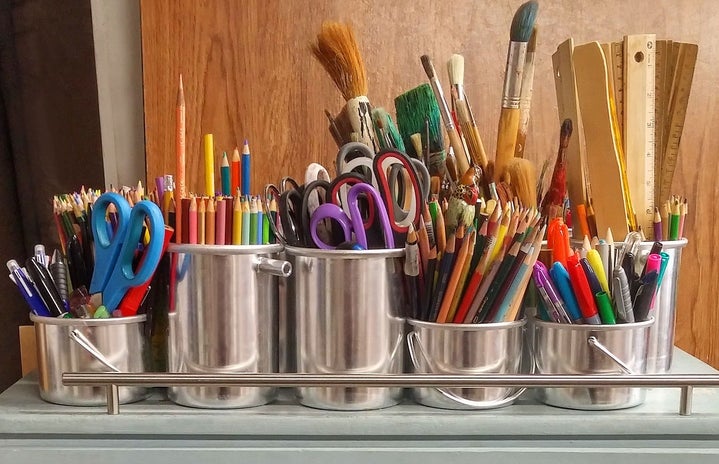London’s Saatchi Gallery has long been renowned for bringing new undiscovered talent into the mainstream art world, and from January to March the Gallery will continue to do this on a political level – an attempt at redressing the gender inequality in contemporary art. For its 30th anniversary, the Saatchi Gallery is holding their first ever all-women exhibition: Champagne Life. The show borrows its name from a piece by featured artist Julia Wachtel (shown below), and will showcase the work of fourteen women artists across various backgrounds, ages and at different stages in their careers.
(Photo Credit: The Independent)
Director of Art Basel, Marc Spiegler proclaimed 2015 as the year of the woman, and he was not wrong. Last year not only saw the Rubell Family Collection unveiling “No Man’s Land” at Art Basel Miami Beach, a collection of 136 works by 72 women artists, but Annie Lebovitz also released an extension of her “Women: New Portraits” series. The Champagne Life exhibit, which is still on show until the 9th of March, is a hopeful promise that the progress made for women in art that was made last year will continue into 2016.
(Photo Credit: The Economist)
Nigel Hurst, the gallery’s chief executive, told the Guardian that “We’ve always supported the work of women artists over the years… but I think there’s still a huge amount of work to be done.” Hurst continues that “in terms of the number of women artists that are having their work exhibited and shown, there remains a glass ceiling that needs to be addressed.” Hurst’s comments prove shockingly valid when looking at the statistics that the Guardian provides: the East London Fawcett group 2013 audit of 134 commercial London galleries discovered women constituted only 31% of all the represented artists. The gender disparity in art representation inevitably leads to the financial glass-ceiling that Hurst addresses – the highest price paid at auction for a piece by a living female artist is £4.85m (a Yayoi Kusama painting) compared to the highest male equivalent being £40.98m.
The fourteen artists to be featured are as follows: Mequitta Ahuja (USA) (work shown below), Alice Anderson (UK), Maria Angeletti (France), Jelena Bulajic (Serbia), Julia Dault (Canada), Mia Feuer (Canada), Sigrid Holmwood (Australia), Virgile Ittah (Paris), Maha (Saudi Arabia), Suzanne McClelland (USA), Seung Ah Paik (Korea), Stephanie Quayle (UK), Soheila Sokhanvari (Iran), and Julia Wachtel (USA). Each artist brings a unique element to Champagne Life, culminating in a varied and long overdue celebration of women artists, although there could always be more diversity.
(Photo Credit: Saatchi Gallery)
The BBC reports that the organisers state the exhibition will provide “a rare and apposite moment to reflect on what it means to be a female artist working today.” So what exactly does it mean to be a woman artist working today? Hurst’s assertion that “women artists are no different to women everywhere, they have to juggle family commitments with their working practice. So I think they probably have to keep more plates spinning than their male counterparts” indeed does touch on the demanding and possibly restrictive roles that todays society enforces on women as mothers, but the comment can also appear reductive.
Jezebel magazine quotes artist Mickalene Thomas who stated on the exhibit’s opening panel that her simply creating art is a form of activism, because she is black and a woman. Thomas asserts that “you don’t necessarily have to claim that but the act of making art itself is a political and feminist act when you’re a woman”, taking this comment onboard, the work showcased during Champagne Life each uniquely contribute to a powerful and positive progressive move towards “approaching issues of the glass ceiling that applies to the art world as much as to the world at large” and closing the ever-prevalent gender gap pervading our society.


